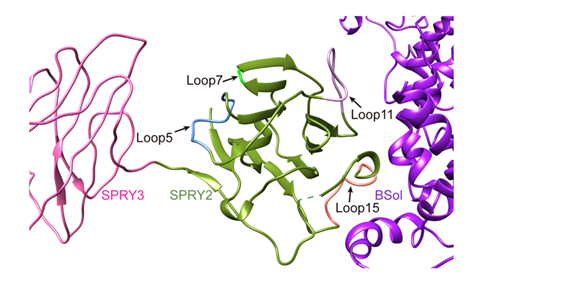Recently "Journal of Agricultural and Food Chemistry" successively published two latest scientific findings on new targets for green pesticides by Professor Yuchi’s research team from the School of Pharmaceutical Science and Technology. The two papers are titled Discovery of potential species-specific green insecticides targeting lepidopteran ryanodine receptor (https://pubs.acs.org/doi/10.1021/acs.jafc.0c01063) and Crystal Structure of the Ryanodine Receptor SPRY2 Domain from the Diamondback Moth Provides Insights into the Development of Novel Insecticides (https://pubs.acs.org/doi/10.1021/acs.jafc.9b08151), respectively, and the latter was selected as the ACS editor's choice, and promoted by the American Chemical Society (ACS) (https: //mp.weixin.qq.com/s/U4Pgz1466vmhVFdJ5_8BCQ).
Diamondback moth (DBM) is one of the main pests harming cruciferous vegetables such as cabbage, rapeseed and cauliflower. Statistics show that the losses and control costs caused by DBM worldwide are as high as US $ 4-5 billion per year.
With the large amount of pesticides used, diamondback moth has developed strong resistance to almost all pesticides, which makes it extremely challenging to control.
Diamide insecticides are a new class of insecticides that act on insect ryanodine receptors (RyRs) with an annual sale over US $ 2 billion. However, the recent emergence of resistant pests in many countries around the world has greatly reduced their efficacy. Therefore, it is urgent to develop new insecticides targeting different binding sites in insect RyRs to overcome the current resistance crisis. But the lack of structural information about insect RyR proteins has hindered our understanding of its molecular mechanism and the development of highly selective green pesticides.
These two projects by Prof. Yuchi’s group have carried out detailed structural and functional studies on the N-terminal domain and SPRY2 domain of DBM RyR, respectively, and elucidated the molecular mechanism of channel gating regulation and the species specificity, based on which they identified novel green insecticidal small molecules through screening, laying an important theoretical basis for further improving food safety.


By the School of Pharmaceutical Science and Technology
Editor: Eva Yin

